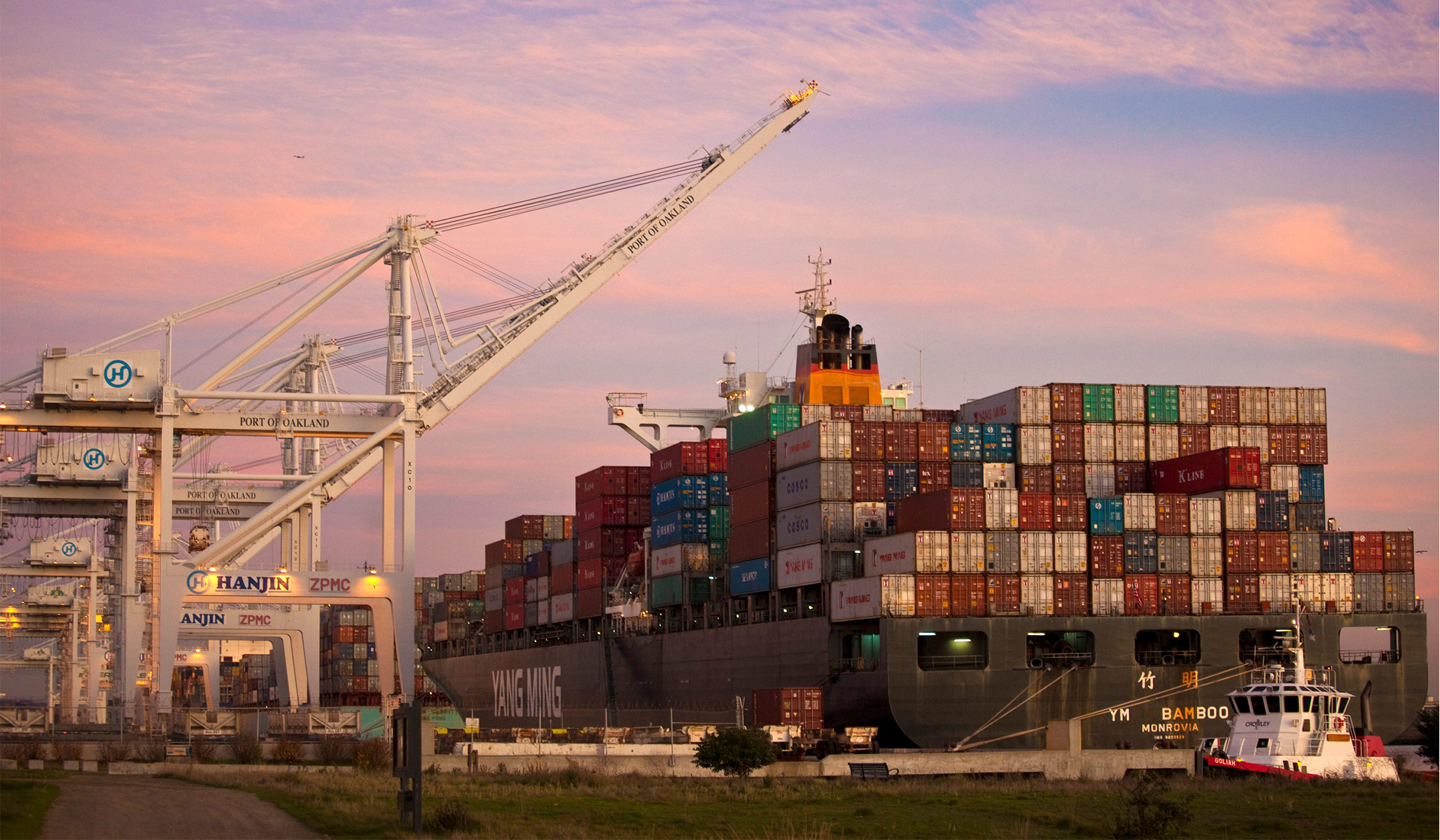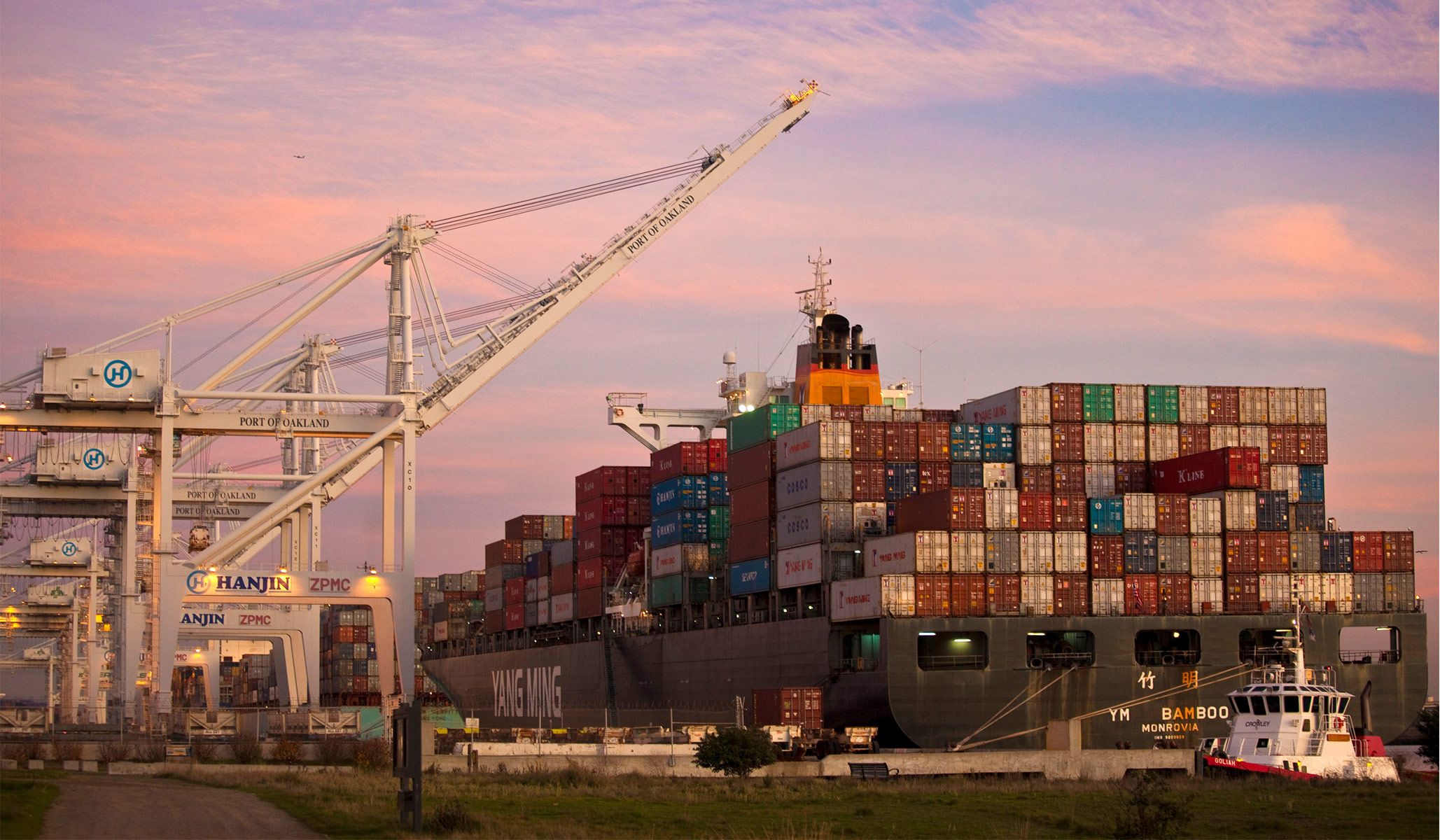
(Beck Diefenbach/Reuters)
With America’s major seaports clogged with ships full of goods, it’s not unreasonable to ask why shippers don’t just use planes instead. Ships are old-fashioned and slow, and many Americans probably didn’t realize how dependent we still are on them before the shipping crisis put it in the headlines. Airplanes are faster and more modern, plus they aren’t limited to coastal destinations.
Air freight and ocean freight are not as close substitutes as you might think, though. Here are some reasons why.
The biggest reason is economies of scale. Ships are much larger than planes and the more cargo you pack on one ship, the cheaper each individual piece of cargo is to ship. To give perspective on the scale, recall the Ever Given, the container ship that was stuck in the Suez Canal. It’s 1,312 feet long. That’s over five times as long as a Boeing 747-8, one of the largest widely used cargo planes in the world. The Ever Given is 192 feet wide, which is nearly ten times wider than the cabin of the 747-8.
The difference in scale really shows when you measure in freight, though. The unit of measure for ocean freight is 20-foot equivalent units, or TEUs. It’s a measure of volume based on the space a standard 20-foot-long container takes up. Air freight, on the other hand, is measured in kilograms. One TEU can contain tens of thousands of kilograms of freight. The Ever Given can carry 20,000 containers. You can see how ocean freight scales up orders of magnitude faster than air freight.
Ocean freighters are also used exclusively for ocean freight. Though purpose-built cargo planes exist, most air freight is shipped in the cargo holds of passenger planes. (The reduction in passenger flights during the pandemic caused major problems for the air freight industry, and some airlines began shipping freight in passenger cabins to keep revenue coming in.) If you want to ship a large amount of air freight, you have to charter your own plane, which adds another huge cost.
Packing air freight is also more difficult than packing ocean freight. There are challenges in packing an ocean container, but they pale in comparison to packing an airplane. Air freight is loaded onto a pallet, called a “cookie sheet,” which is packed as tightly as possible in a warehouse, then wrapped in plastic and secured with bungie cords and rope. This process is much less standardized than filling an ocean container, and it’s extremely important to get it exactly right. If the contents of the pallet shift during flight, it can cause the plane to crash. Packing ocean freight does not demand that level of precision, and mistakes don’t carry that level of consequences.
Those extra costs and hassles mean air freight is used sparingly. About 90 percent of all shipments are by ocean. The obvious case when air freight is worthwhile is when speed is the primary concern. Goods shipped by ocean are also more likely to be damaged than goods shipped by air, so delicate items like electronics and designer clothes are often shipped on planes. Above all, air freight is used for items that are expensive since the revenue they bring in will compensate for the higher shipping costs.
But with the price of ocean freight soaring, the gap between air and ocean freight prices has narrowed. According to a Journal of Commerce article from July, “Before COVID-19, the average price of global air cargo was 12 times more expensive than sea shipping, but in May that dropped to 6 times more expensive.” It’s still much more expensive, just less so than it usually is.
That decrease in the price differential means air freight has become worthwhile for more shippers than normal. According to the Financial Times, “With factory lines in the US and Europe relying on the timely arrival of parts and components, and manufacturers suffering from depleted inventories, no premium seems too much to pay to cut the journey time from Asia from the weeks it takes by container ship to a matter of days by plane.” More shipping by air means those prices have gone up as well, with year-over-year increases of 70 to 100 percent on some routes. That’s nothing compared to the 1,000 percent increases on some shipping routes, but airlines are still struggling to keep up with the surge in freight.
Shipping prices aren’t set by shipping companies. They are determined on a global market based on economics forces. That determination process takes into account real factors, such as the capacity of airplanes and ships. Because of those real factors, it’s difficult to imagine a scenario where the price of air freight could ever be cheaper than (or even close to) the price of ocean freight in absolute terms. But the price of shipping by air relative to the price of shipping by sea has declined, so more companies are using air freight than before. Air freight will never be a replacement for ocean freight, though, and it’s not feasible to just use more planes and solve the shipping crisis.
Something to Consider
If you valued reading this article, please consider joining our fight by donating to our Fall Webathon. Your contribution makes it possible for us to continue our mission of speaking truth and defending conservative principles.

